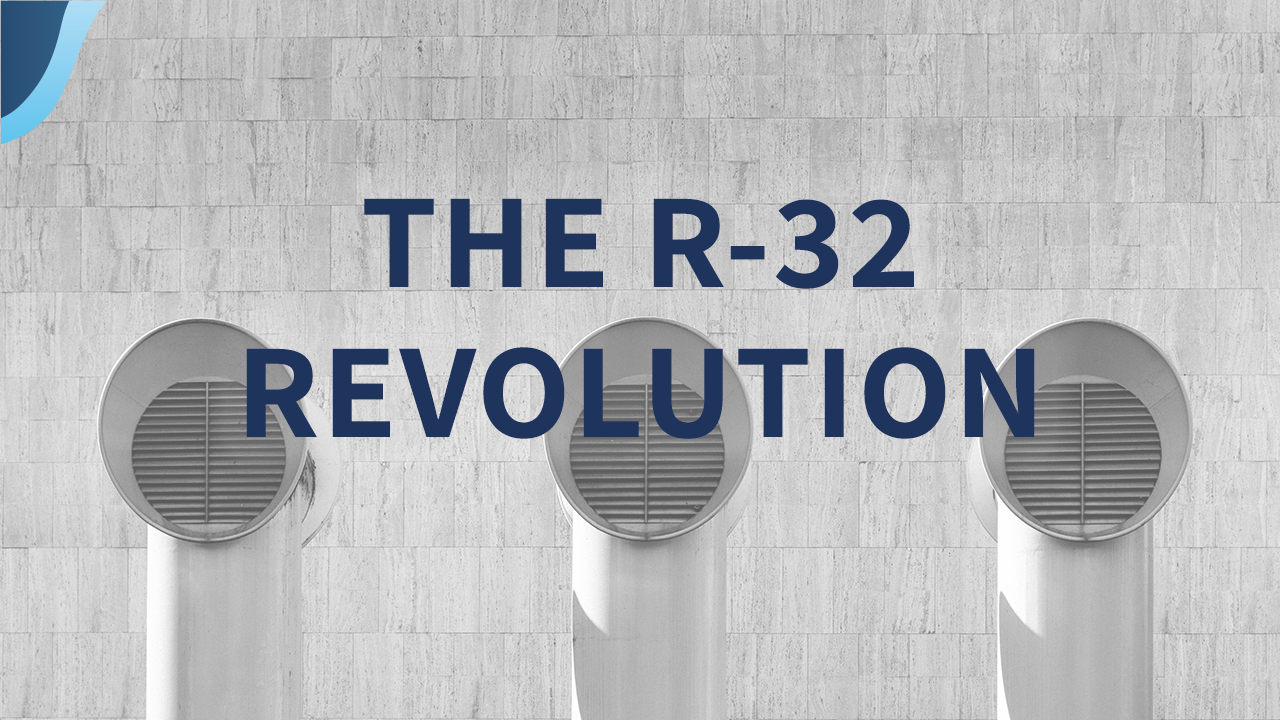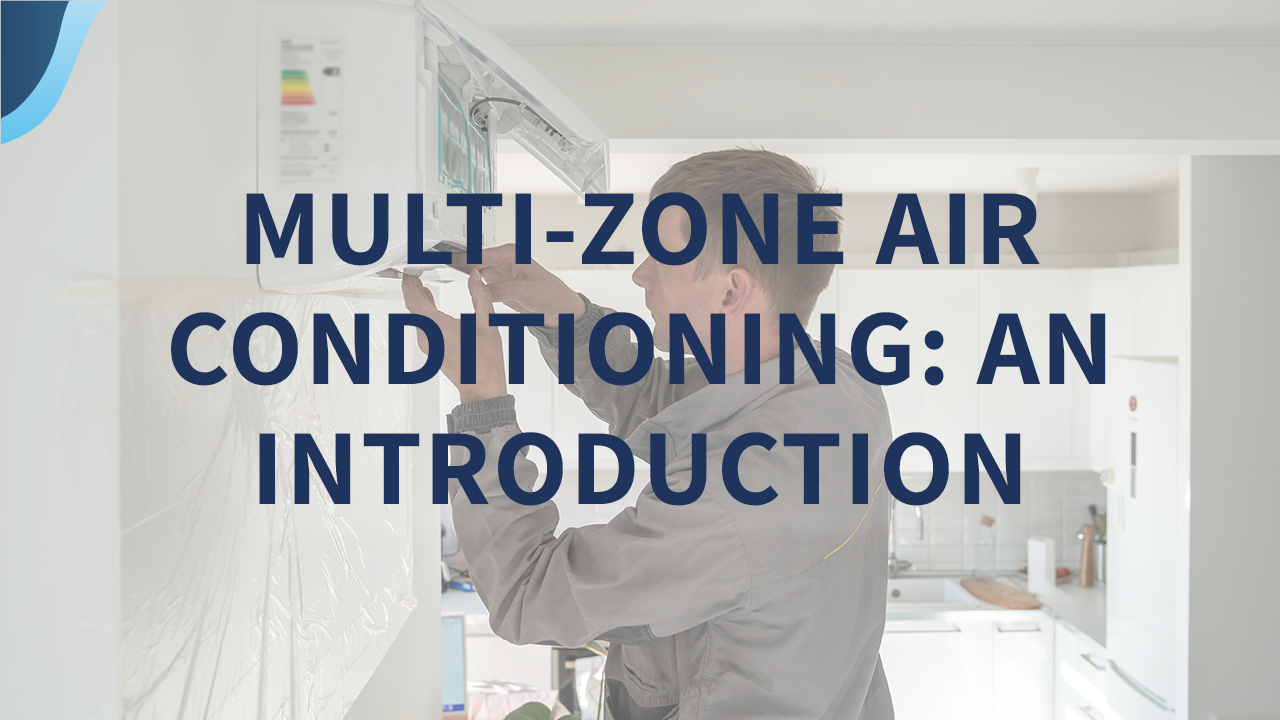The U.S. HVAC industry has remained in limbo waiting to learn if the federal government will take further action regulating the use of hydrofluorocarbons. In lieu of government action, various manufacturers have transitioned to alternative refrigerants on their own.
After the 1987 Montreal Protocol, moves began to phase out refrigerants most harmful to the ozone. Harmful chlorofluorocarbon gases like R22 were replaced with blends like R410A and R407C because of their zero-level ozone depletion potential. Unfortunately, however, the HFCs were found to have even greater global warming potential (GWP).
What is R-32 Refrigerant?
When it comes to HVAC, R-32 refrigerant may be familiar to some, as it makes up 50% of the R410A refrigerant which is widely in use in newer HVAC systems in the US.
The refrigerant otherwise known as difluoromethane is an HFC that is frequently replacing other chemicals like R410A thanks to its lower GWP. Like R410A, R-32 carries zero ODP, but it has just one-third the GWP.
Specifically, R410 has a GWP of 2,088, which means each kilogram released into the atmosphere is as harmful to the atmosphere as 2,088 kilograms of carbon. R-32, on the other hand, carries a GWP of just 675.
In fact, if all machines using R410A were converted to R-32, HFC contribution to global warming would be reduced by the carbon dioxide equivalent of 800 million tons.
Not only that, but R-32 is such an efficient conveyer of heat, it reduces electricity consumption by as much as 10 percent compared to R22. It is also practical, since R-32 is a single-component refrigerant, easy to handle, reuse and recycle.
Why R-32?
All refrigerants have pros and cons to their use. But in determining what gas to use in their next-generation appliances, manufacturers consider more than the environmental impact.
Obviously, contributions to ozone depletion and global warming are of vital importance, particularly when it comes to meeting government regulations. Still, when choosing to adopt a new type of refrigerant, manufacturers also consider safety, compatibility with materials, cost of production and energy efficiency.
“R-32 is the optimum choice — considering its superior energy efficiency, high thermal conductivity and low toxicity,” Mitsubishi Electric’s Carl Dickinson told MBS Magazine. “The popularity of R-32 is worldwide, with particularly high sales in Japan, Australia and India.”
The ideal refrigerant is one that is safe to use, has no toxicity and zero flammability risk. It must also be completely compatible with all materials used in constructing cooling appliances, inexpensive to produce and more efficient than other refrigerants on the market.
No current refrigerant options are perfect, but R-32 checks off more boxes than any other. It’s readily available, cost efficient, chemically stable and energy efficient. While it has 0 ODP, it does not come without contributions to global warming. It is somewhat flammable; however, it is not explosive.
Manufacturers Adopt R-32 Refrigerant
R-32 has undergone extensive consumer testing. It has been the dominant refrigerant for residential HVAC equipment in Japan for several years, where it accounted for 25 percent of all residential units in 2018 – more than 25 million. Likewise, the refrigerant has become a popular choice in China and many European nations. According to Daikin Industries, R-32 is used in more than 84 million residential units in 70 different countries. Daikin itself has sold more than 21 million R-32 residential units globally.
Recently, Daikin announced it is developing ducted and ductless residential and light-commercial products that utilize R-32. Daikin evaluated a variety of low-GWP refrigerants for use in North America. While the HVAC-industry leader focused on reducing climate impact, it also looked at safety, energy efficiency and cost-effectiveness.
Daikin chose R-32 for a variety of reasons. For example, not only does R-32 carry a drastically lower GWP, but its use can reduce the effects of direct refrigerant emissions by reducing the equipment refrigerant charge by as much as 40 percent compared to R410A. Furthermore, Daikin found that R-32 has greater energy efficiency than alternative refrigerants.
“Daikin believes that R-32 – a pure, single component refrigerant available globally from multiple suppliers – is easier to reuse, reclaim and recycle when compared to other refrigerants that are blends of R-32 and other components,” the company explained in a press release. “In summary, Daikin believes R-32 can effectively help to minimize the environmental impact of HVAC equipment.”
Daikin isn’t stopping at producing R-32 and compatible appliances. The company has shared access to its patents dealing with the development of HVAC equipment that uses R-32. The sharing of its knowledge and expertise should encourage other manufacturers to follow suit in the manufacture and sale of more environmentally friendly HVAC equipment.
“We know that the net effect of air conditioning on the environment is a combination of the refrigerant used and the energy consumed,” Daikin Applied Americas’ President and CEO Mike Schwartz said in the same press release. “Daikin is in a unique position as a manufacturer of both HVAC equipment and refrigerants. Our approach has always been to use our expertise to choose the right refrigerant for each application. R-32 is the right low GWP refrigerant choice for many of our residential, light-commercial and applied products in North America.”












